Search Result
Results for "
conditioned
" in MedChemExpress (MCE) Product Catalog:
6
Biochemical Assay Reagents
4
Isotope-Labeled Compounds
| Cat. No. |
Product Name |
Target |
Research Areas |
Chemical Structure |
-
- HY-P1284
-
ZIP
1 Publications Verification
|
PKC
|
Neurological Disease
Cancer
|
|
ZIP is a selective peptide inhibitor of PKMζ. ZIP injections can block the impairment in morphine conditioned place preference induced .
|
-

-
- HY-15543A
-
|
|
5-HT Receptor
|
Neurological Disease
|
|
CP-809101 hydrochloride is a potent and highly selective 5-HT2C receptor agonist, with pEC50s of 9.96, 7.19 and 6.81 M for human 5HT2C, 5HT2B and 5HT2A receptor. CP-809101 hydrochloride inhibits conditioned avoidance responding in rats and antagonizes both PCP (phencyclidine hydrochloride)- and d-amphetamine-induced hyperactivity. CP-809101 hydrochloride also reduces food and nicotine dependence in rats, can be used in studies of antipsychotic and nicotine dependence .
|
-

-
- HY-P1284A
-
|
|
PKC
|
Neurological Disease
Cancer
|
|
ZIP TFA is a selective peptide inhibitor of PKMζ. ZIP TFA injections can block the impairment in morphine conditioned place preference induced .
|
-

-
- HY-116181
-
|
|
Dopamine Receptor
|
Neurological Disease
|
|
YQA14 is a high affinity dopamine D3 receptor antagonist. YQA14 is anti-opioid addiction agent. YQA14 inhibits Morphine/Cocaine-induced conditioned place preference (CPP) in animals .
|
-
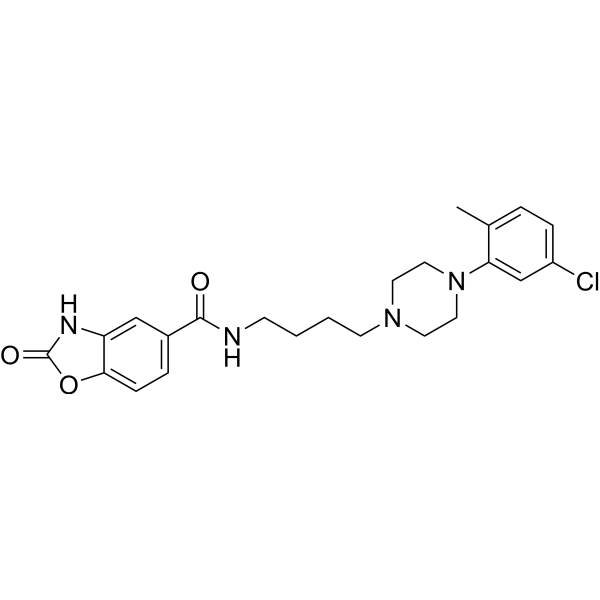
-
- HY-15543
-
|
|
5-HT Receptor
|
Neurological Disease
|
|
CP-809101 is a potent and highly selective 5-HT2C receptor agonist, with pEC50s of 9.96, 7.19 and 6.81 M for human 5HT2C, 5HT2B and 5HT2A receptor. CP-809101 inhibits conditioned avoidance responding in rats and antagonizes both PCP (phencyclidine hydrochloride)- and d-amphetamine-induced hyperactivity. CP-809101 also reduces food and nicotine dependence in rats, can be used in studies of antipsychotic and nicotine dependence .
|
-

-
- HY-130576
-
|
|
Apoptosis
|
Cardiovascular Disease
|
|
POVPC is an oxidized phospholipid can be found in in oxidatively modified low density lipoprotein (oxLDL). POVPC inhibits VSMC growth in high serum condition. POVPC induces apoptosis in low serum condition .
|
-
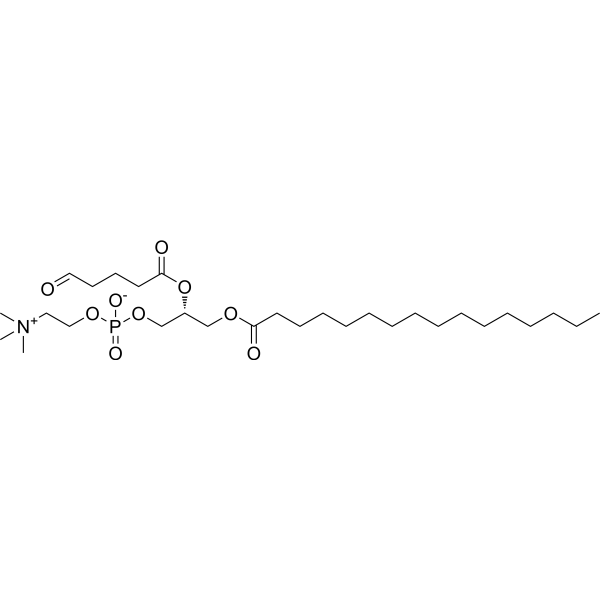
-
- HY-B0704S
-
|
Nonanedioic acid-d14
|
Endogenous Metabolite
|
Others
|
|
Azelaic acid-d14 is the deuterium labeled Azelaic acid[1]. Azelaic acid is an organic compound produced by the ozonolysis of oleic acid;component of a number of hair and skin conditioners[2][3].
|
-

-
- HY-N0543
-
-
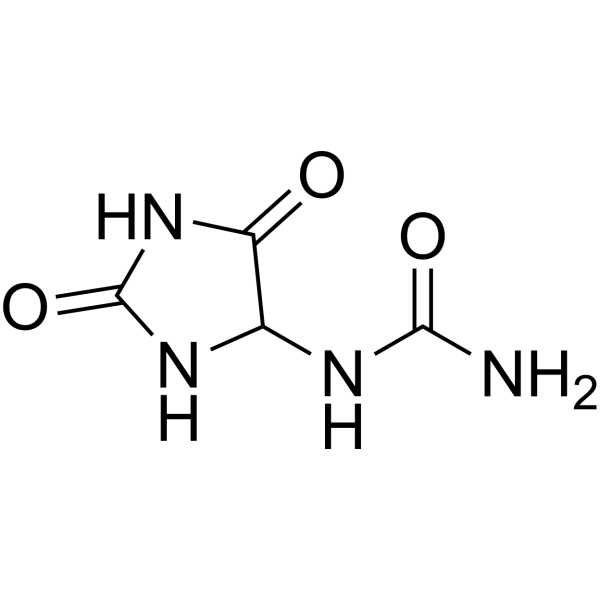
-
- HY-D0009
-
|
|
Fluorescent Dye
|
Others
|
|
Bromocresol green sodium is an anionic dye. Bromocresol green sodium can be used for pH indication and DNA agarose gel electrophoresis. Bromocresol green sodium is also used in mammalian albumin measurement. Bromocresol green sodium deprotonates and produces the monoanionic form of yellow colour at lower pH (acidic condition), and produces dianionic blue colour at the basic condition .
|
-

-
- HY-149257
-
|
|
JAK
STAT
|
Cancer
|
|
HAT-SIL-TG-1&AT is a Janus tyrosine kinase (JAK) inhibitor with antitumor effects. HAT-SIL-TG-1&AT is the hypoxia-activated prodrug, witch inhibits JAK-STAT signaling in tumor tissue. And HAT-SIL-TG-1&AT inhibits HEL cells proliferation and downregulated phosphorylated STAT3/5 under hypoxic conditions .
|
-
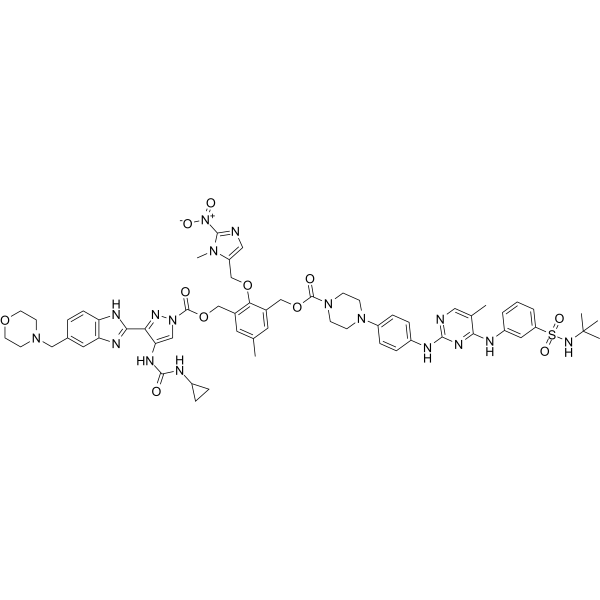
-
- HY-N3025
-
|
|
Others
|
Metabolic Disease
|
|
Zinc sulfate heptahydrate is a hydrate that is the heptahydrate form of zinc sulfate. Zinc sulfate heptahydrate is a dietary supplement used for zinc deficiency and to prevent the condition in those at high risk .
|
-
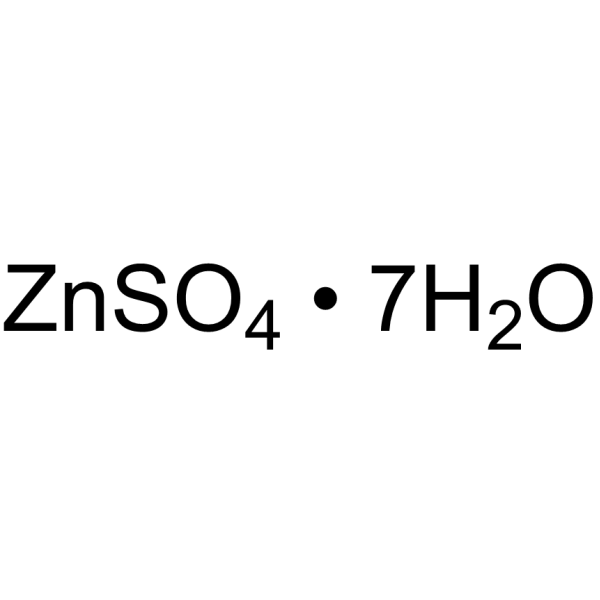
-
- HY-41324
-
|
|
|
|
|
7-keto-Deoxycholic acid is a metabolite of bile acids in Clostridium absonum. 7-keto-Deoxycholic acid is also converted from Lactobacillus and Bifidobacterium with specific condition .
|
-
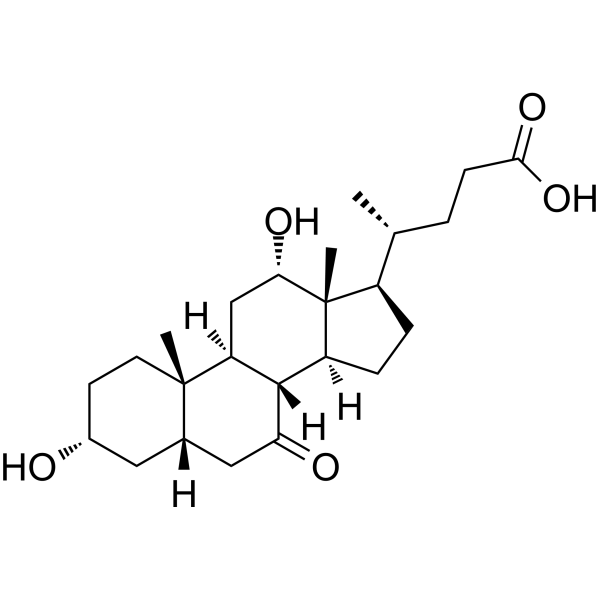
-
- HY-150125
-
-

-
- HY-B1024
-
|
DL-Pantothenol; DL-Pantothenyl alcohol
|
Biochemical Assay Reagents
|
Others
|
|
DL-Panthenol (DL-Pantothenol) is an alcohol derivative of pantothenyl acid. DL-Panthenol exerts eyelash protection effect. DL-Panthenol is widely used in the Skin and hair conditioner research .
|
-
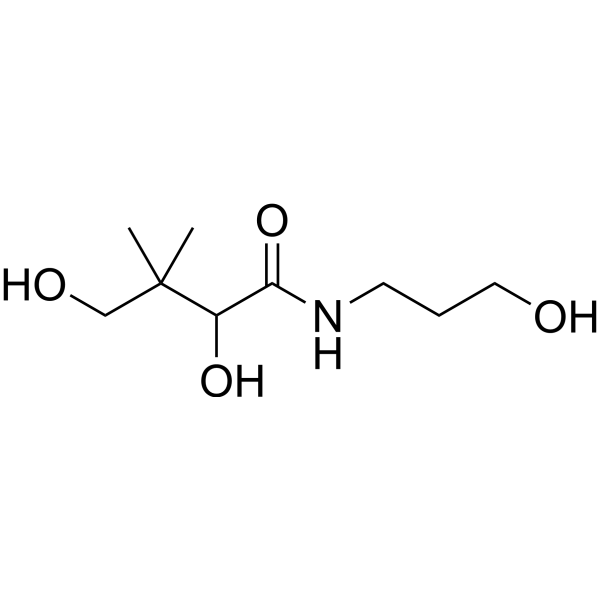
-
- HY-N11071
-
|
|
Bacterial
|
Infection
|
|
Monascorubramine is a microbial colorant. Monascorubramine is capable of producing by the Monascus, which is from the bacteria Talaromyces. Under the condition of different pH value, the hue and chromaticity value of the colorant are also different .
|
-
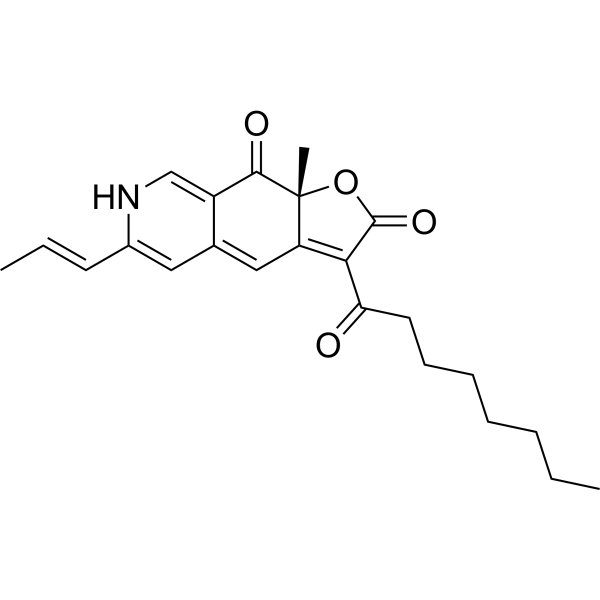
-
- HY-N4072
-
|
|
Others
|
Metabolic Disease
|
|
6''-O-Acetylglycitin, a acetyl glucoside, is one of the isoflavone isomer in soybeans, shows various extents of content reduction dependent on storage temperature, packaging condition, and its isoflavone isomer kind .
|
-

-
- HY-W782607
-
|
|
Endogenous Metabolite
|
Metabolic Disease
|
|
5α-Cholesta-8,14-dien-3β-ol is an efficient precursor of cholesterol, which converts to cholesterol under aerobic conditions. 5α-Cholesta-8,14-dien-3β-ol can be used for metabolic research .
|
-
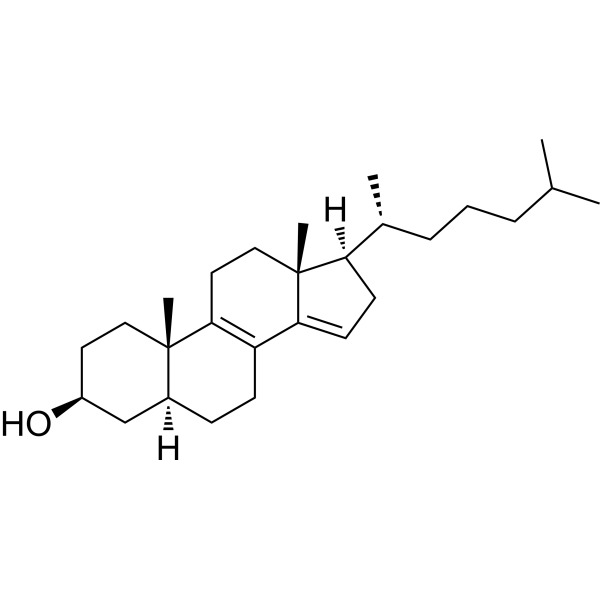
-
- HY-127086
-
|
|
Dopamine Receptor
|
Neurological Disease
|
|
Dicarbine blocks dopamine receptors in various brain parts and prevents the depression of the conditioned defence reflexes caused by stimulation of the mesencephalic portion of the reticular formation. Dicarbine could be used in the schizophrenia and alcoholic psychosis studies .
|
-
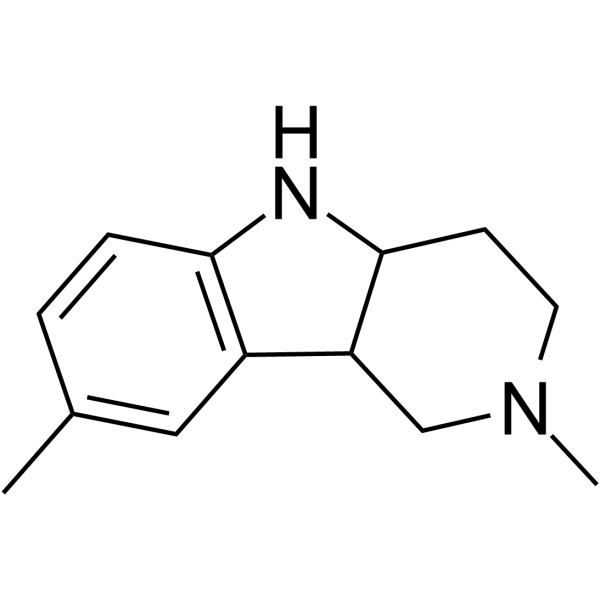
-
- HY-127086A
-
|
|
Dopamine Receptor
|
Neurological Disease
|
|
Dicarbine dihydrochloride blocks dopamine receptors in various brain parts and prevents the depression of the conditioned defence reflexes caused by stimulation of the mesencephalic portion of the reticular formation. Dicarbine dihydrochloride could be used in the schizophrenia and alcoholic psychosis studies .
|
-
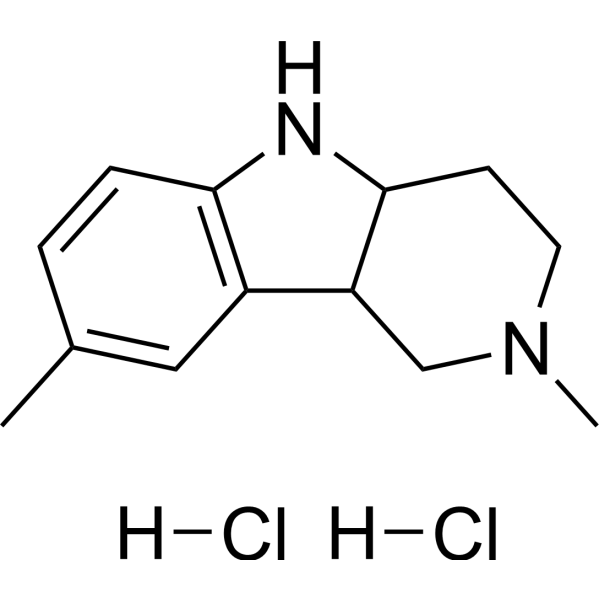
-
- HY-N2086
-
|
Ethyl hexadecanoate
|
Others
|
Others
|
|
Ethyl palmitate, a fatty acid ethyl ester (FAEE), shows a marked preference for the synthesis of ethyl palmitate and ethyl oleate over other FAEEs in human subjects after ethanol consumption. Ethyl palmitate is used as a hair- and skin-conditioning agent .
|
-
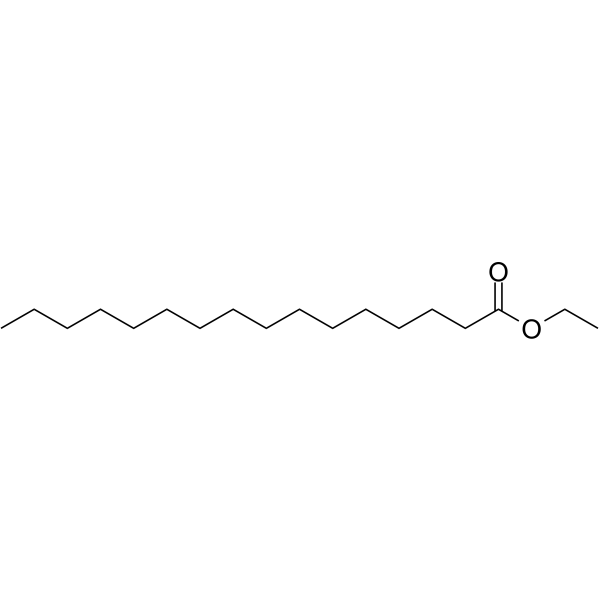
-
- HY-N0543S
-
|
5-Ureidohydantoin-13C2,15N4
|
Imidazoline Receptor
Endogenous Metabolite
|
|
|
Allantoin- 13C2, 15N4 is the 13C and 15N labeled Allantoin[1]. Allantoin is a skin conditioning agent that promotes healthy skin, stimulates new and healthy tissue growth[2].
|
-

-
- HY-114992
-
|
|
Drug Metabolite
|
Neurological Disease
|
|
2-Propyl-2-pentenoic acid is a metabolite of Valproic acid (HY-10585). 2-Propyl-2-pentenoic acid has a facilitating action on the acquisition of conditioned behavior with negative reinforcement in mice .
|
-
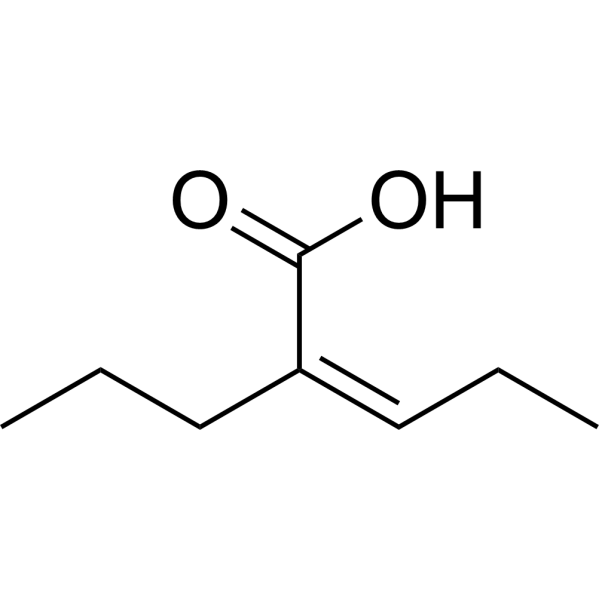
-
- HY-135738
-
|
|
Others
|
Others
|
|
Convicine is a pyrimidine glycoside. Convicine, as well as Vicine, is the precursor of the aglycones Divicine and Isouramil. Convicine is the main factors of favism, which is a genetic condition leading to severe hemolysis after faba bean ingestion. Convicine can be isolated from the faba bean .
|
-

-
- HY-100822A
-
|
(-)-HA 966
|
|
|
|
(S)-(-)-HA 966 ((-)-HA 966), a γ-Hydroxybutyrate-like agent, is weakly active as an NMDA-receptor antagonist. (S)-(-)-HA 966 possesses muscle relaxant action and prevents enhanced mesocorticolimbic dopamine metabolism and behavioral correlates of restraint stress, conditioned fear .
|
-
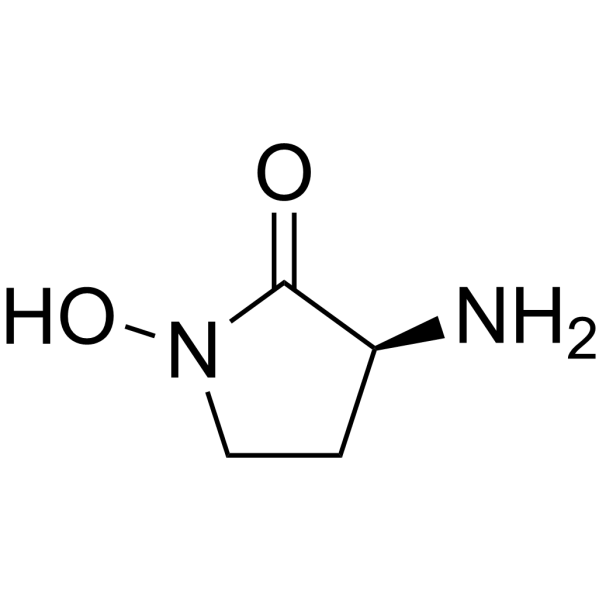
-
- HY-A0298
-
|
|
Histone Methyltransferase
|
Cancer
|
|
EZH2-IN-2 is a EZH2 inhibitor extracted from patent WO2018133795A1, Compound Example 69, with an IC50 of 64 nM. EZH2-IN-2 can be used for the research of cancer or precancerous condition related to EZH2 activity .
|
-
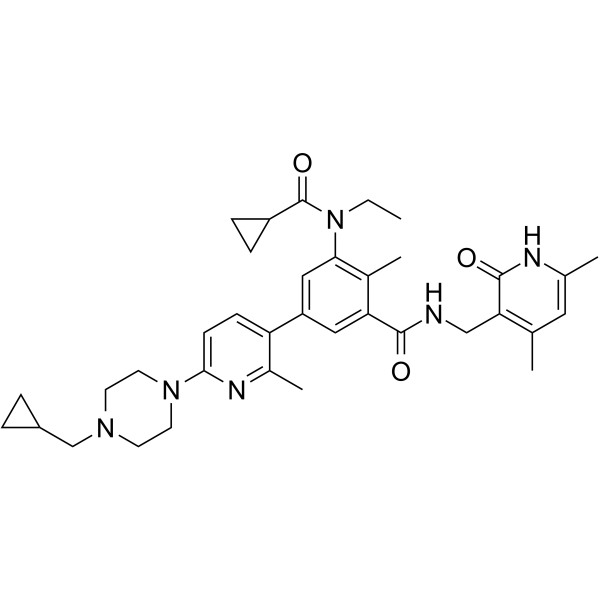
-
- HY-145576
-
|
|
Others
|
Others
|
|
2-Amino-8-oxononanoic acid is an amino acid, incorporation into proteins in E.coli in genetic. 2-Amino-8-oxononanoic acid is efficient in labeling of proteins with different probes with a site-specific manner under a mild condition close to the physiological pH .
|
-
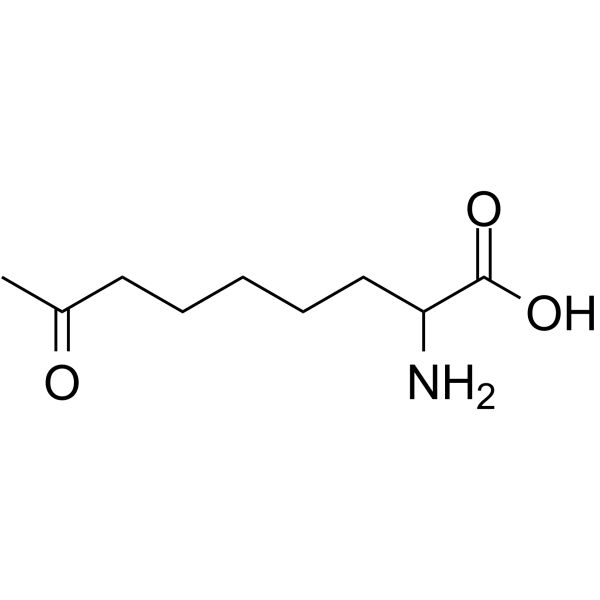
-
- HY-113481A
-
|
|
Others
|
Inflammation/Immunology
Cancer
|
|
17-trans Prostaglandin E3 is a prostaglandin analog, and stimulates Nurr1-dependent transcriptional activity. 17-trans Prostaglandin E3 can be used for research of condition associated with Nurr1,such as cancer and autoimmune disease .
|
-
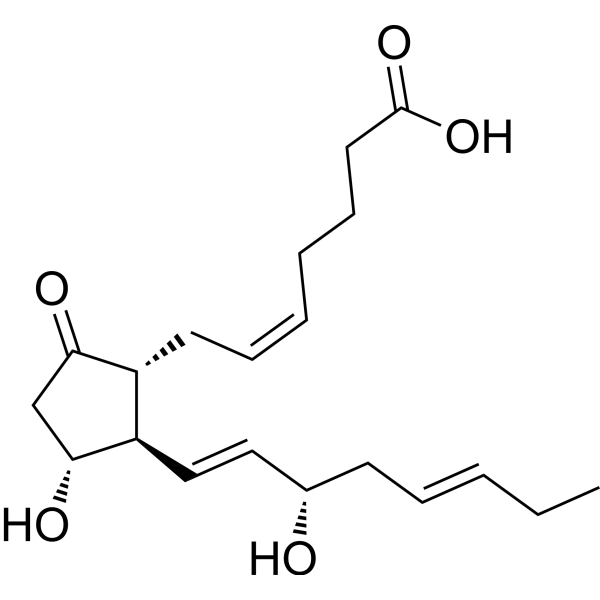
-
- HY-W127338
-
|
|
Biochemical Assay Reagents
|
Others
|
|
Butyl Palmitate is an ester compound commonly used as a conditioning, emollient or fragrance in a variety of cosmetic and personal care products. In addition, it can be used as a solvent or lubricant in various industrial applications. Its unique chemical properties make it an important ingredient in a variety of commercial products, including perfumes, lotions and hair care products.
|
-
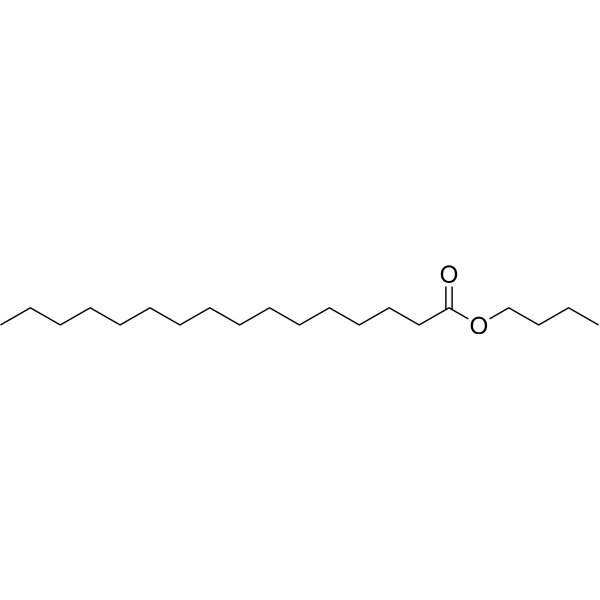
-
- HY-155178
-
|
|
EGFR
|
Cancer
|
|
Antiproliferative agent-34 (Compound A14) is a multi-target kinase inhibitor, with an IC50 of 177 nM and 1567 nM for EGFR L858R/T790M and EGFR WT. Antiproliferative agent-34 also inhibits JAK2, ROS1, FLT3, FLT4, PDGFRα with IC50 of 30.93, 106.90, 108.00, 226.60, 42.53 nM. Antiproliferative agent-34 inhibits H1975 and HCC827 cells proliferation with IC50 values below 40 nM under normoxic condition, and the anti-proliferation potency achieves 4–6-fold improvement (IC50 values < 10 nM) under hypoxic condition .
|
-
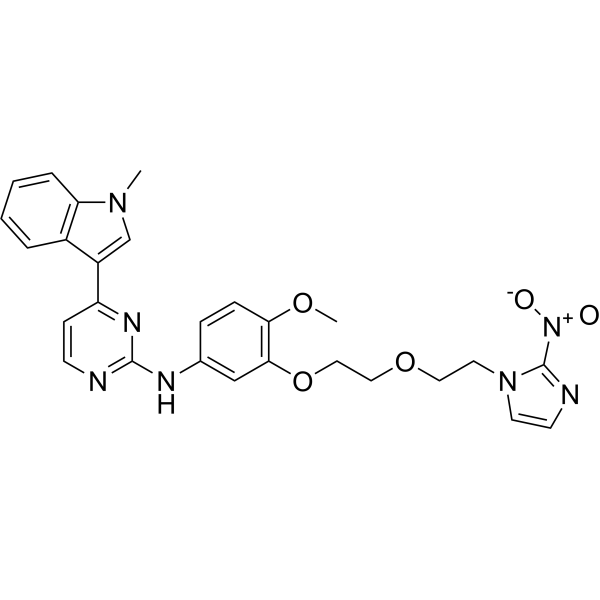
-
- HY-103715
-
|
|
NOD-like Receptor (NLR)
|
Inflammation/Immunology
|
|
NLRP3 modulators 1 is the potent modulator of NLRP3. NLRP3 modulators 1 agonizes or partially agonizes NLRP3 that are useful for researching a condition, disease or disorder in which a decrease in LRP3 activity contributes to the pathology (extracted from patent WO2017184746A1, compound 107) .
|
-
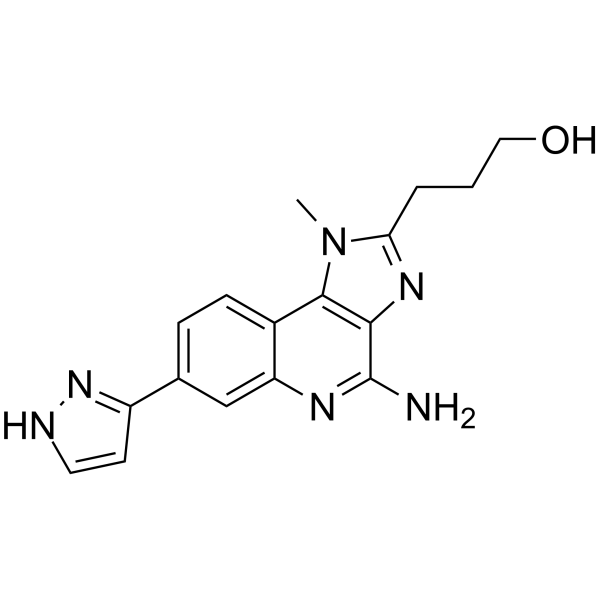
-
- HY-N2086S
-
|
Ethyl hexadecanoate-d31
|
Isotope-Labeled Compounds
|
|
|
Ethyl palmitate-d31 is the deuterium labeled Ethyl palmitate. Ethyl palmitate, a fatty acid ethyl ester (FAEE), shows a marked preference for the synthesis of ethyl palmitate and ethyl oleate over other FAEEs in human subjects after ethanol consumption. Ethyl palmitate is used as a hair- and skin-conditioning agent[1].
|
-

-
- HY-29035
-
|
|
Others
|
Others
|
|
Dopamine acrylamide, a polyphenol derivative, can cross-link collagen mainly via noncovalent bonding under acidic-non-oxidized conditions .
|
-
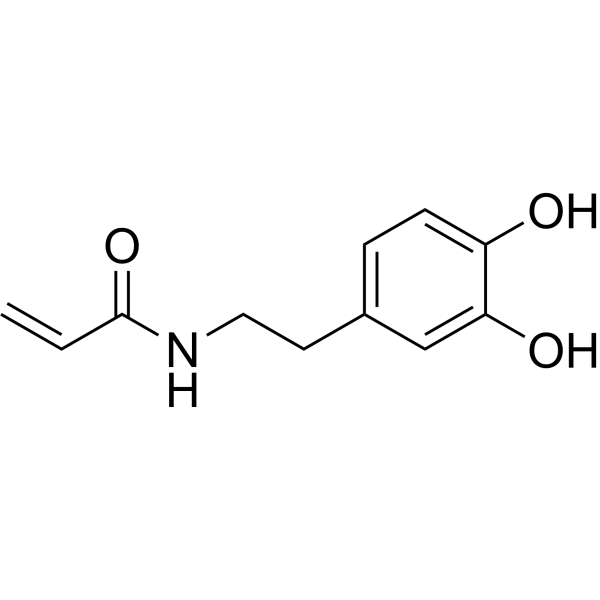
-
- HY-D1468
-
|
|
Reactive Oxygen Species
|
Cancer
|
|
Phototherapeutic agent-1 is a multi-modal light diagnosis agent with aggregation-induced emission properties. have certain Phototherapeutic agent-1 has certain reactive oxygen species (ROS) generation capacity in illumination condition. Phototherapeutic agent-1 can effectively kill cancer cells and tumor tissue .
|
-
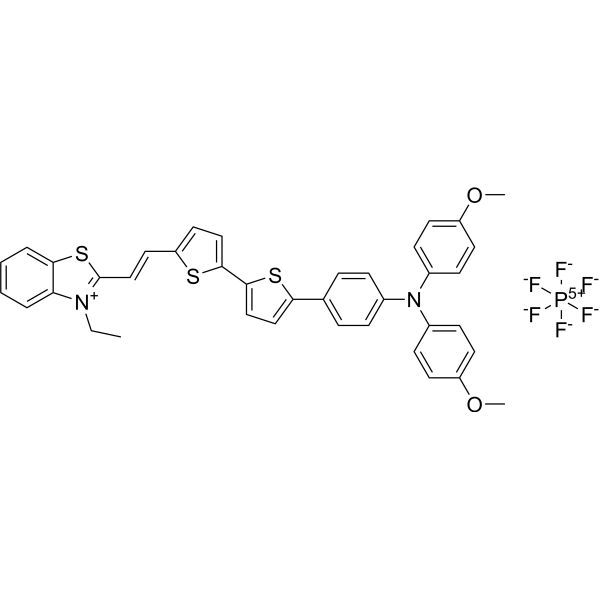
-
- HY-W269700S
-
|
L-Isoleucyl-L-leucine-13C6,15N
|
Isotope-Labeled Compounds
|
Metabolic Disease
|
|
Ile-(Leu-13C6,15N)-OH (TFA) is 13C- and 15N-labeled L-Isoleucyl-L-leucine (HY-W269700). L-Isoleucyl-L-leucine has a role as a metabolite and can be used to inhibit movement-induced muscle damage and muscle defective condition.
|
-

-
- HY-117709
-
|
|
HDAC
|
Neurological Disease
|
|
BRD6688 is a selective HDAC2 inhibitor. BRD6688 increases H4K12 and H3K9 histone acetylation in primary mouse neuronal cells. BRD6688 crosses the blood brain barrier and rescues the memory defects associated with p25 induced neurodegeneration in contextual fear conditioning in a CK-p25 mouse model .
|
-
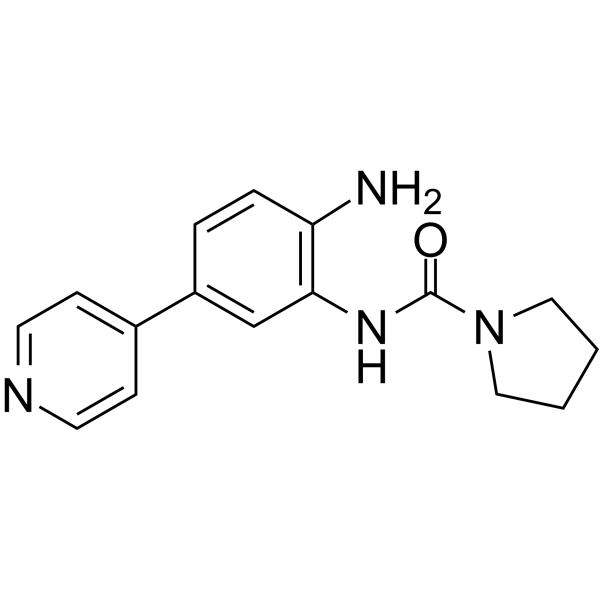
-
- HY-105034
-
|
BMY 13859-1 free base
|
5-HT Receptor
|
Neurological Disease
|
|
Tiospirone is a 5-HT2 receptor antagonist with affinity for D2, 5-HT1a, and 5-HT7, and sigma receptors. Tiospirone decreases consumption of ethanol while increasing food intake of rats. Tiospirone can also reduce the reinforcing properties of Cocaine exhibited in the conditioned place preference paradigm .
|
-
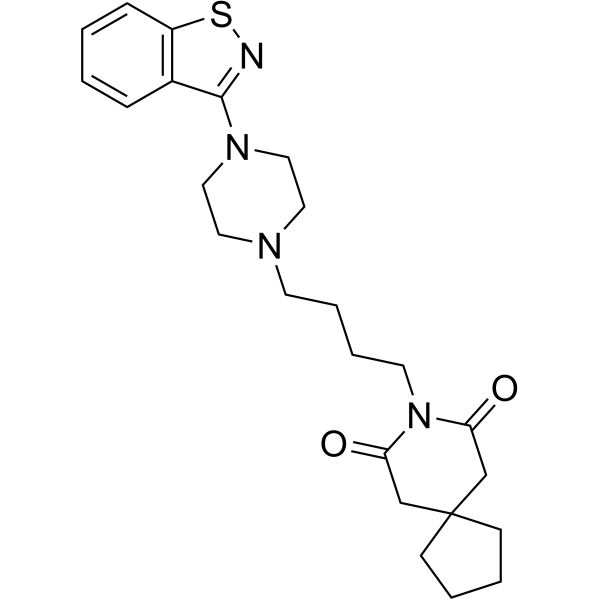
-
- HY-137231B
-
|
|
nAChR
|
Neurological Disease
|
|
(S)-UFR2709 (hydrochloride) is a competitive nAChR antagonist and displays higher affinity for α4β2 nAChRs than for α7 nAChRs. (S)-UFR2709 (hydrochloride) decreases anxiety and reduces ethanol consumption and ethanol preference in alcohol-preferring rats. (S)-UFR2709 (hydrochloride) acts as an anxiolytic agent and can be used for the study of nicotine addiction .
|
-
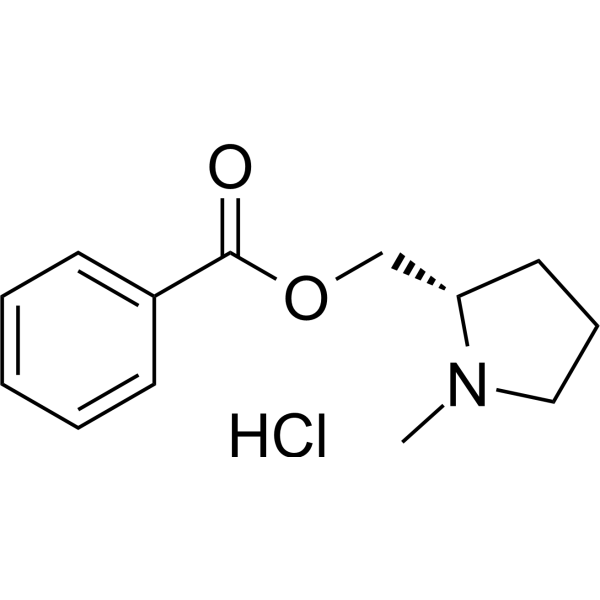
-
- HY-137231A
-
|
|
nAChR
|
Neurological Disease
|
|
(S)-UFR2709 is a competitive nAChR antagonist and displays higher affinity for α4β2 nAChRs than for α7 nAChRs. (S)-UFR2709 decreases anxiety and reduces ethanol consumption and ethanol preference in alcohol-preferring rats. (S)-UFR2709 acts as an anxiolytic agent and can be used for the study of nicotine addiction .
|
-
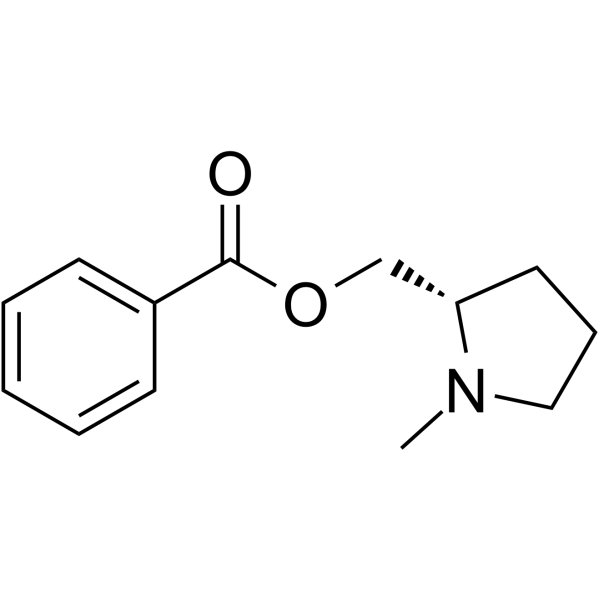
-
- HY-110279
-
|
|
GPR68
|
Neurological Disease
|
|
Ogerin is a selective GPR68 positive aliasing modulator (PAM) (pEC50=6.83) with a moderate antagonistic effect on A2A (Ki=220 nM). Ogerin inhibits the fear conditioning reflex in mice and also inhibits TGF-β-induced myofibroblast differentiation of fibroblasts from multiple organ systems. Ogerin can be used in the studies of fibrotic diseases and neurological disorders .
|
-

-
- HY-110206
-
|
|
Cannabinoid Receptor
|
Metabolic Disease
|
|
AM6545 is a peripherally active, cannabinoid receptor antagonist with limited brain penetration. AM6545 binds to CB1 and CB2 receptors with Kis of 1.7 nM and 523 nM, respectively. AM6545 is a neutral antagonist. AM6545 can be used for the research of obesity and its complications .
|
-
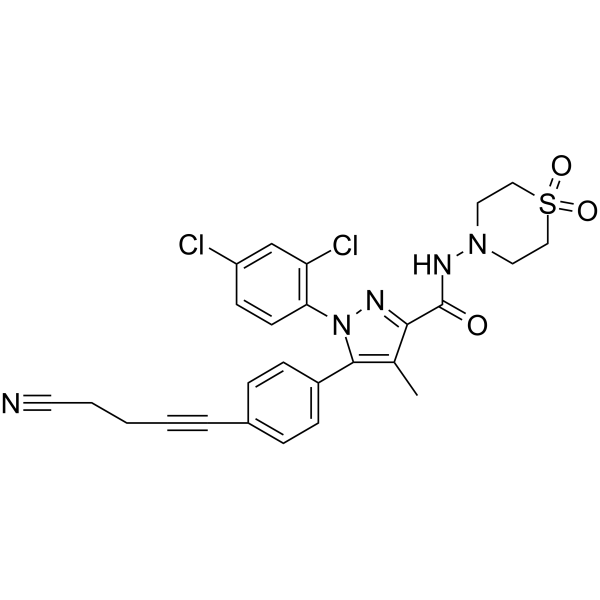
-
- HY-108628
-
SU16f
1 Publications Verification
|
PDGFR
|
Cancer
|
|
SU16f is a potent and selective PDGFRβ inhibitor with IC50s of 10 nM, 140 nM, 2.29 μM for PDGFRβ, PDGFR1, PDGFR2, respectively . Neutralization of PDGFRβ receptor by SU16f blocks the promoting role of GC-MSCs (gastric cancer-derived mesenchymal stem cells) conditioned medium in gastric cancer cell proliferation and migration .
|
-
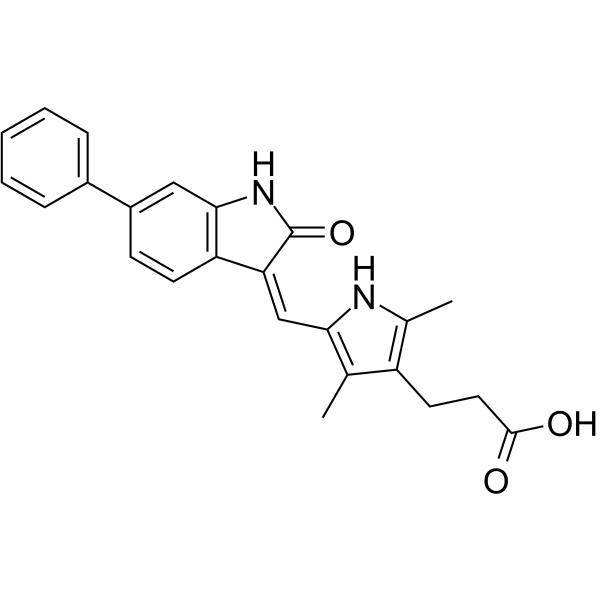
-
- HY-145576B
-
|
|
Others
|
Others
|
|
2-Amino-8-oxononanoic acid (hydrochloride) is the hydrochloride form of 2-Amino-8-oxononanoic acid. 2-Amino-8-oxononanoic acid is an amino acid, incorporation into proteins in E.coli in genetic. 2-Amino-8-oxononanoic acid is efficient in labeling of proteins with different probes with a site-specific manner under a mild condition close to the physiological pH .
|
-
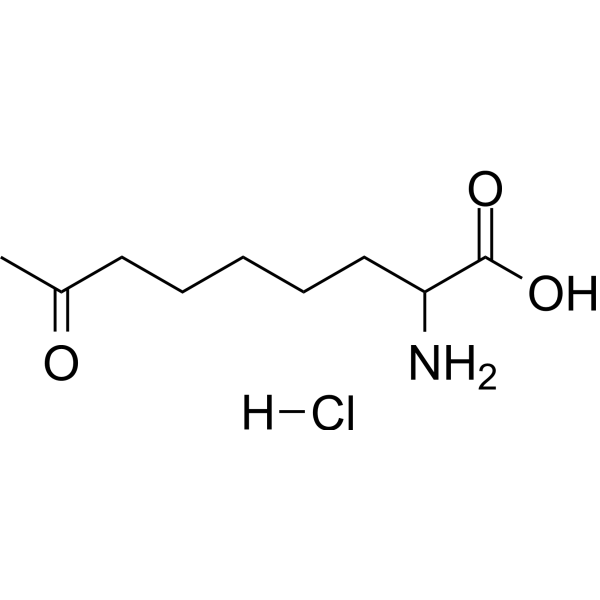
-
- HY-W250186
-
|
Teterdecyl dimethyl amine oxide; Myristyldimethylamine N-oxide
|
Biochemical Assay Reagents
|
Others
|
|
Myristyl dimethylamine oxide is a cationic surfactant belonging to the family of amine oxides. It is commonly used as a foam booster, thickener and conditioning agent in a variety of personal care and household cleaning products. Myristyl dimethylamine oxide has several properties suitable for these applications, including the ability to reduce surface tension, increase viscosity and provide antistatic properties. In addition, it can be used as a raw material for the production of other surfactants and specialty chemicals.
|
-
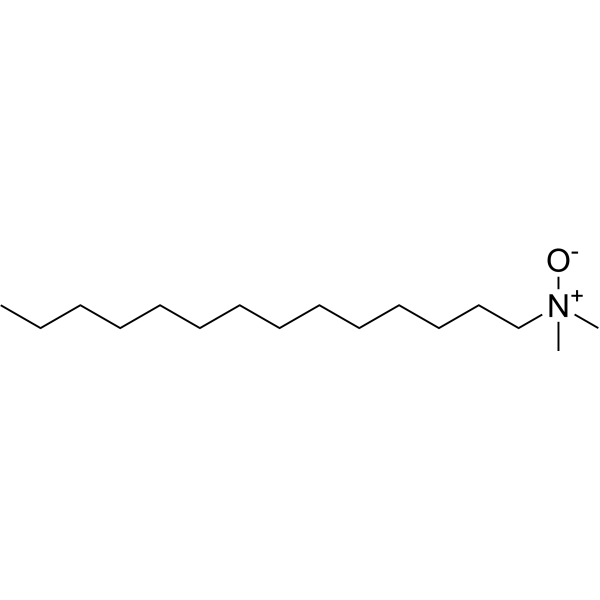
-
- HY-W250194
-
|
|
Biochemical Assay Reagents
|
Others
|
|
Luviquat FC 550 is a cationic polymer commonly used in a variety of personal care and cosmetics. It is a viscous liquid containing quaternary ammonium groups which give it a positive charge. Luviquat FC 550 has a variety of properties suitable for these applications including its ability to provide conditioning, antistatic and film-forming properties to hair and skin. In addition, it is used as a binder in oral care products and as a flocculant in industrial water treatment.
|
-
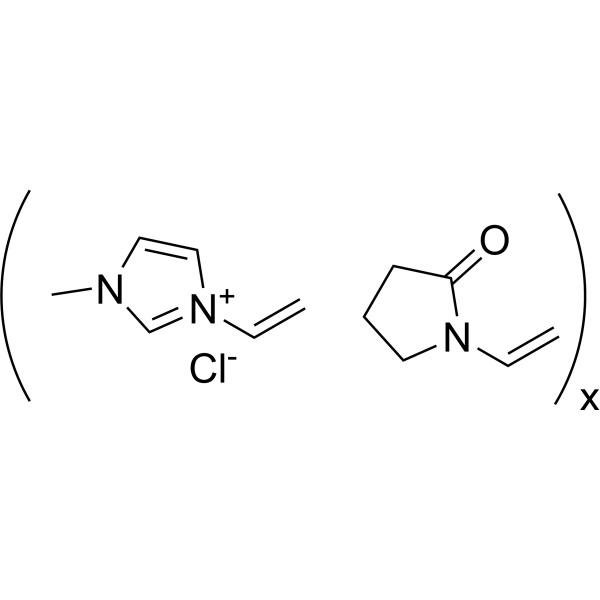
-
- HY-101180
-
|
Ceramide 2
|
|
|
|
C2 Ceramide (Ceramide 2) is the main lipid of the stratum corneum and a protein phosphatase 1 (PP1) activator. C2 Ceramide activates PP2A and ceramide-activated protein phosphatase (CAPP). C2 Ceramide induces cells differentiation, autophagy and apoptosis, inhibits mitochondrial respiratory chain complex III. C2 Ceramide is also a skin conditioning agent that protects the epidermal barrier from water loss .
|
-
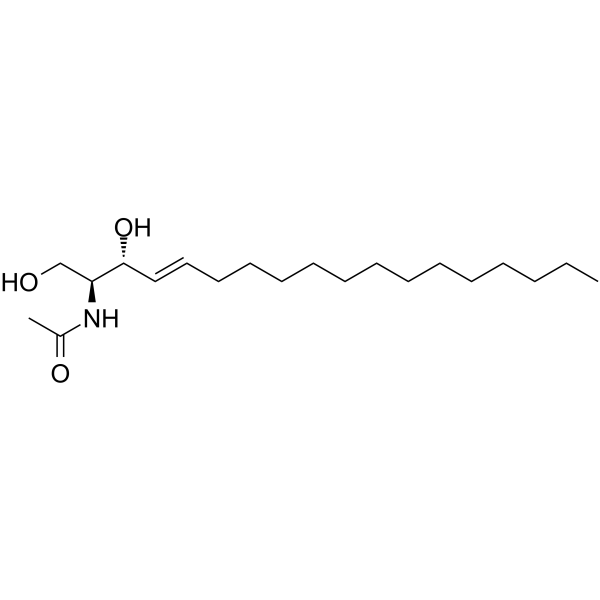
-
- HY-147884
-
|
|
Bacterial
|
Infection
|
|
Antitubercular agent-28 (compound 2) is a potent antitubercular agent with an IC50 value of 1.5 µM, an MIC value of 4.5 µM, an IC90 value of 2.5 µM. Antitubercular agent-28 shows antimycobacterial activity for resistant isolates of Mycobacterium tuberculosis H37Rv. Antitubercular agent-28 shows effective intracellular antimycobacterial activity and low cytotoxicity .
|
-
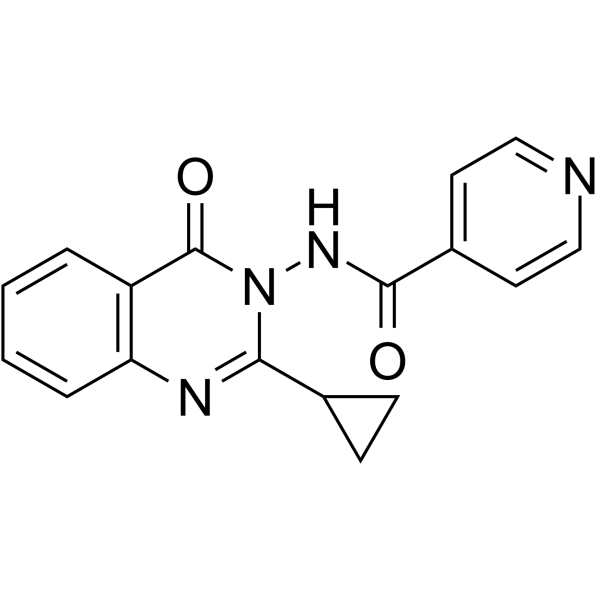
-
- HY-147883
-
|
|
Bacterial
|
Infection
|
|
Antitubercular agent-27 (compound 1) is a potent antitubercular agent with an IC50 value of 3.2 µM, an MIC value of 7.8 µM, an IC90 value of 7.0 µM. Antitubercular agent-27 shows antimycobacterial activity for resistant isolates of Mycobacterium tuberculosis H37Rv. Antitubercular agent-27 shows effective intracellular antimycobacterial activity and low cytotoxicity .
|
-
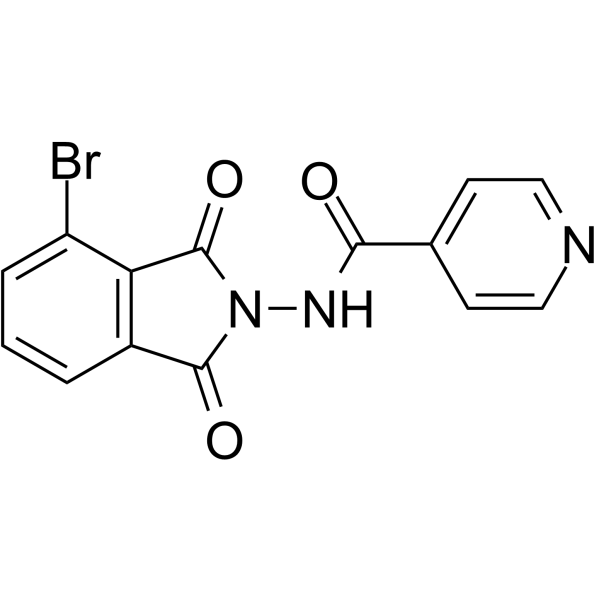
-
- HY-N2410
-
|
N-feruloyltyramine; Moupinamide
|
Reactive Oxygen Species
Apoptosis
|
Inflammation/Immunology
|
|
N-trans-Feruloyltyramine (N-feruloyltyramine), an alkaloid, is a potent antioxidant. N-trans-Feruloyltyramine improves H2O2-induced intracellular ROS generation and decreases apoptosis. N-trans-Feruloyltyramine has the potential for oxidative stress-related neurodegenerative conditions and cancer research .
|
-

-
- HY-111174
-
-
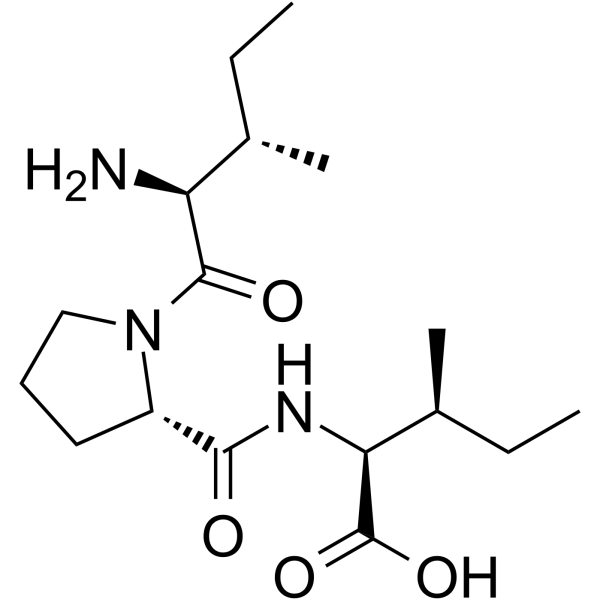
-
- HY-151835
-
|
|
ADC Linker
|
Others
|
|
DBCO-PEG24-NHS ester is a click chemistry reagent. DBCO-PEG24-NHS ester is a click chemistry PEG reagent containing NHS ester that is able to react specifically and efficiently with primary amines (e.g. the side chain of lysine residues or aminosilane-coated surfaces) at neutral or slightly basic condition to form a covalent bond. The hydrophilic PEG spacer arm improves water solubility and provides a long and flexible connection that minimizes steric hindrance involved with ligation. DBCO is commonly used for copper-free Click Chemistry reactions. Reagent grade, for research use only .
|
-
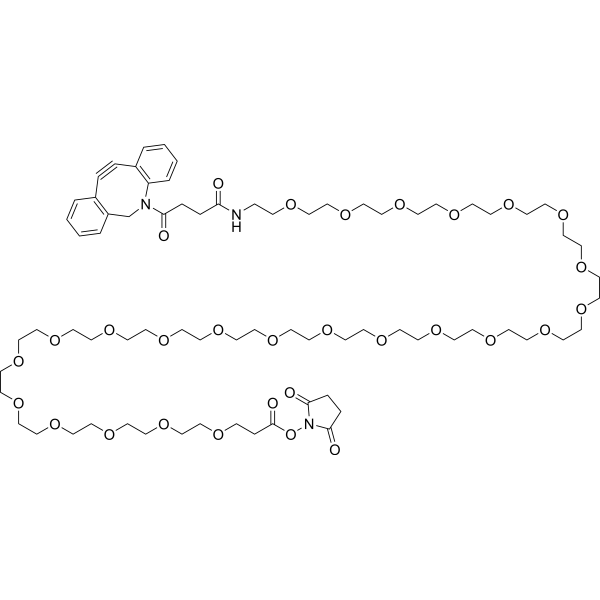
- HY-W010807
-
|
|
Biochemical Assay Reagents
|
Others
|
|
Hexadecyl palmitate is an organic compound commonly used in the cosmetic industry as an emollient, thickener and skin conditioning agent. Cetyl palmitate is derived from a mixture of cetyl alcohol (a fatty alcohol) and palmitic acid (a saturated fatty acid). It is often used in skin care products such as moisturizers, lotions, and creams to improve their texture and Helps them glide smoothly on the skin. In addition to its use in cosmetics, cetyl palmitate is used in other industries including pharmaceuticals, food additives and lubricants. Overall, it's considered safe for use in personal care products, but like any other ingredient, it may cause irritation or an allergic reaction in some people.
|
-

- HY-111280
-
|
|
Dopamine Receptor
|
Neurological Disease
|
|
ST 198 is an orally active D3R antagonist. ST 198 can block the expression of nicotine-induced CPP at doses selective for D3R. ST 198 can be used for the research of neurological disease .
|
-
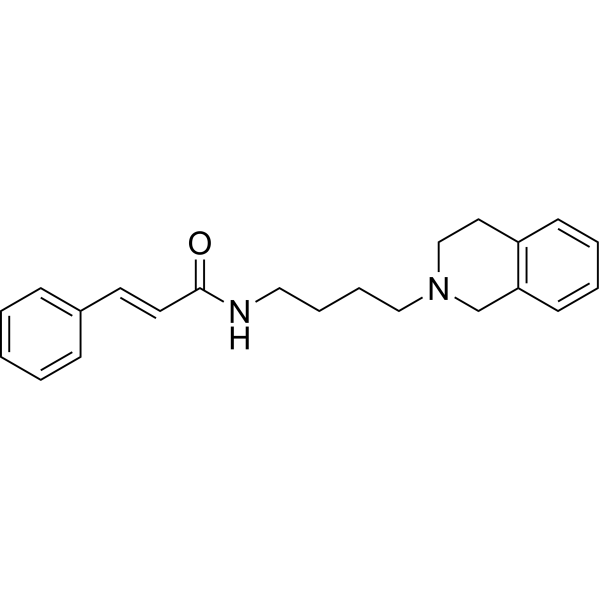
- HY-151827
-
|
|
ADC Linker
|
Others
|
|
DBCO-PEG2-NHS ester is a click chemistry reagent containing an azide group. DBCO-PEG2-NHS ester is a click chemistry PEG reagent containing NHS ester that is able to react specifically and efficiently with primary amines (e.g. the side chain of lysine residues or aminosilane-coated surfaces) at neutral or slightly basic condition to form a covalent bond. The hydrophilic PEG spacer arm improves water solubility and provides a long and flexible connection that minimizes steric hindrance involved with ligation. DBCO is commonly used for copper-free Click Chemistry reactions. Reagent grade, for research use only .
|
-
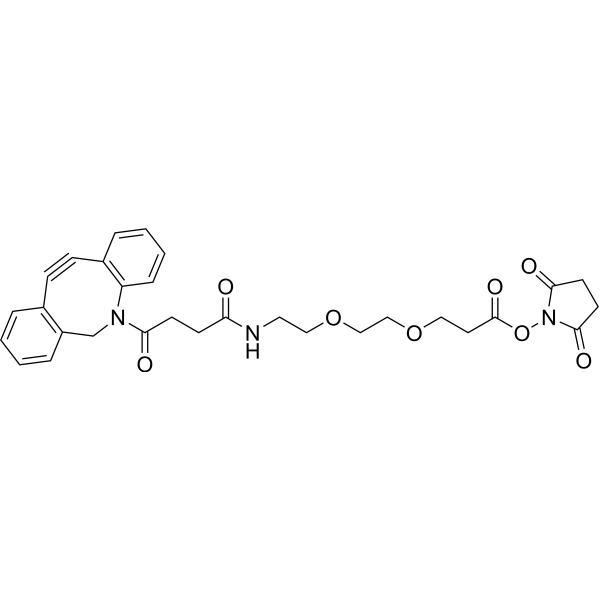
- HY-17474
-
|
SC 69124
|
COX
|
Inflammation/Immunology
Cancer
|
|
Parecoxib (SC 69124) is a highly selective and orally active COX-2 inhibitor, the proagent of Valdecoxib (HY-15762). Parecoxib Sodium is a nonsteroidal anti-inflammatory agent (NSAID) and inhibits prostaglandin (PG) synthesis. Parecoxib can be used for the relief of acute postoperative pain and symptoms of chronic inflammatory conditions such as osteoarthritis and rheumatoid arthritis in vivo.
|
-
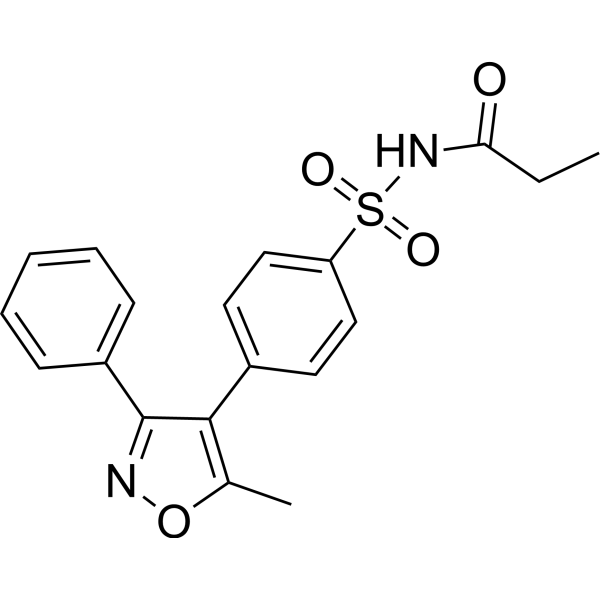
- HY-17474A
-
|
SC 69124A
|
COX
|
Inflammation/Immunology
Cancer
|
|
Parecoxib Sodium (SC 69124A) is a highly selective and orally active COX-2 inhibitor, the proagent of Valdecoxib (HY-15762). Parecoxib Sodium is a nonsteroidal anti-inflammatory agent (NSAID) and inhibits prostaglandin (PG) synthesis. Parecoxib Sodium can be used for the relief of acute postoperative pain and symptoms of chronic inflammatory conditions such as osteoarthritis and rheumatoid arthritis in vivo.
|
-
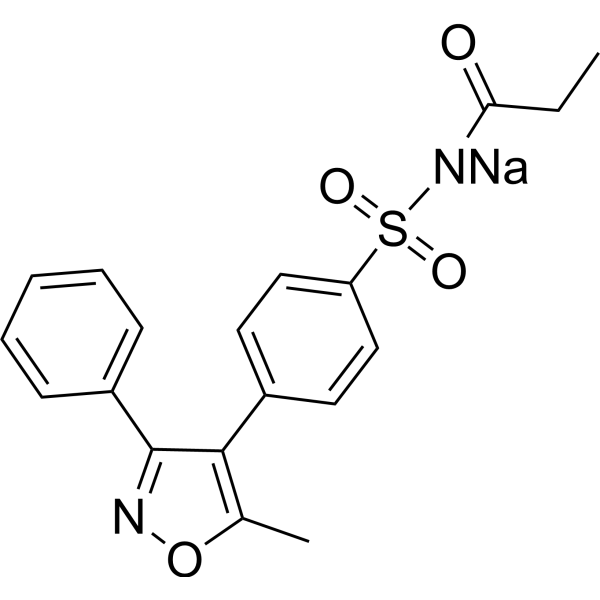
-
-
HY-L083
-
|
|
2043 compounds
|
|
Mutations in oncogenes and tumor suppressor genes can modify multiple signaling pathways and in turn cell metabolism, which facilitates tumorigenesis. The paramount hallmark of tumor metabolism is “aerobic glycolysis” or the Warburg effect, coined by Otto Warburg in 1926, in which cancer cells produce most of energy from glycolysis pathway regardless of whether in aerobic or anaerobic condition. Usually, cancer cells are highly glycolytic (glucose addiction) and take up more glucose than do normal cells from outside. The increased uptake of glucose is facilitated by the overexpression of several isoforms of membrane glucose transporters (GLUTs). Likewise, the metabolic pathways of glutamine, amino acid and fat metabolism are also altered. Recent trends in anti-cancer drug discovery suggests that targeting the altered metabolic pathways of cancer cells result in energy crisis inside the cancer cells and can selectively inhibit cancer cell proliferation by delaying or suppressing tumor growth.
MCE provides a unique collection of 2043 compounds which cover various tumor metabolism-related signaling pathways. These compounds can be used for anti-cancer metabolism targets identification, validation as well anti-cancer drug discovery.
|
| Cat. No. |
Product Name |
Type |
-
- HY-D0009
-
|
|
Dyes
|
|
Bromocresol green sodium is an anionic dye. Bromocresol green sodium can be used for pH indication and DNA agarose gel electrophoresis. Bromocresol green sodium is also used in mammalian albumin measurement. Bromocresol green sodium deprotonates and produces the monoanionic form of yellow colour at lower pH (acidic condition), and produces dianionic blue colour at the basic condition .
|
| Cat. No. |
Product Name |
Type |
-
- HY-B1024
-
|
DL-Pantothenol; DL-Pantothenyl alcohol
|
Biochemical Assay Reagents
|
|
DL-Panthenol (DL-Pantothenol) is an alcohol derivative of pantothenyl acid. DL-Panthenol exerts eyelash protection effect. DL-Panthenol is widely used in the Skin and hair conditioner research .
|
-
- HY-W127338
-
|
|
Biochemical Assay Reagents
|
|
Butyl Palmitate is an ester compound commonly used as a conditioning, emollient or fragrance in a variety of cosmetic and personal care products. In addition, it can be used as a solvent or lubricant in various industrial applications. Its unique chemical properties make it an important ingredient in a variety of commercial products, including perfumes, lotions and hair care products.
|
-
- HY-E70073
-
|
Sialidase isoenzyme M2; AuSialidase M2
|
Biochemical Assay Reagents
|
|
Ganglioside sialidase (AuSialidase M2) from Arthrobacter ureafaciens. Ganglioside sialidase is a highly specific N-acetylneuraminidase. Ganglioside sialidase can hydrolyze the internal sialic acid of GM1 under optimal condition with sodium cholate .
|
-
- HY-W250186
-
|
Teterdecyl dimethyl amine oxide; Myristyldimethylamine N-oxide
|
Biochemical Assay Reagents
|
|
Myristyl dimethylamine oxide is a cationic surfactant belonging to the family of amine oxides. It is commonly used as a foam booster, thickener and conditioning agent in a variety of personal care and household cleaning products. Myristyl dimethylamine oxide has several properties suitable for these applications, including the ability to reduce surface tension, increase viscosity and provide antistatic properties. In addition, it can be used as a raw material for the production of other surfactants and specialty chemicals.
|
-
- HY-W250194
-
|
|
Biochemical Assay Reagents
|
|
Luviquat FC 550 is a cationic polymer commonly used in a variety of personal care and cosmetics. It is a viscous liquid containing quaternary ammonium groups which give it a positive charge. Luviquat FC 550 has a variety of properties suitable for these applications including its ability to provide conditioning, antistatic and film-forming properties to hair and skin. In addition, it is used as a binder in oral care products and as a flocculant in industrial water treatment.
|
-
- HY-W010807
-
|
|
Biochemical Assay Reagents
|
|
Hexadecyl palmitate is an organic compound commonly used in the cosmetic industry as an emollient, thickener and skin conditioning agent. Cetyl palmitate is derived from a mixture of cetyl alcohol (a fatty alcohol) and palmitic acid (a saturated fatty acid). It is often used in skin care products such as moisturizers, lotions, and creams to improve their texture and Helps them glide smoothly on the skin. In addition to its use in cosmetics, cetyl palmitate is used in other industries including pharmaceuticals, food additives and lubricants. Overall, it's considered safe for use in personal care products, but like any other ingredient, it may cause irritation or an allergic reaction in some people.
|
| Cat. No. |
Product Name |
Target |
Research Area |
-
- HY-P1284
-
ZIP
1 Publications Verification
|
PKC
|
Neurological Disease
Cancer
|
|
ZIP is a selective peptide inhibitor of PKMζ. ZIP injections can block the impairment in morphine conditioned place preference induced .
|
-
- HY-P1284A
-
|
|
PKC
|
Neurological Disease
Cancer
|
|
ZIP TFA is a selective peptide inhibitor of PKMζ. ZIP TFA injections can block the impairment in morphine conditioned place preference induced .
|
-
- HY-P10139
-
|
|
Peptides
|
Others
|
|
Dnp-PLGLWAr-NH2 is a synthetic collagenase/gelatinase substrate. Dnp-PLGLWAR-NH2 can be used to quantify total MMP activity in APMA-activated conditioned medium samples .
|
-
- HY-P4767
-
|
|
Peptides
|
Metabolic Disease
|
|
Amylin (1-13) (human) is a fragment and a residues within amyloid cores of Amylin (human IAPP). Amylin is a glucose-regulating hormone, deposits as amyloid fibrils in condition of type II diabetes (T2D). Amylin (1-13) (human) has no effect on firbl formation, as it cannot form fibrils by itself .
|
| Cat. No. |
Product Name |
Category |
Target |
Chemical Structure |
| Cat. No. |
Product Name |
Chemical Structure |
-
- HY-B0704S
-
|
|
|
Azelaic acid-d14 is the deuterium labeled Azelaic acid[1]. Azelaic acid is an organic compound produced by the ozonolysis of oleic acid;component of a number of hair and skin conditioners[2][3].
|
-

-
- HY-N0543S
-
|
|
|
Allantoin- 13C2, 15N4 is the 13C and 15N labeled Allantoin[1]. Allantoin is a skin conditioning agent that promotes healthy skin, stimulates new and healthy tissue growth[2].
|
-

-
- HY-N2086S
-
|
|
|
Ethyl palmitate-d31 is the deuterium labeled Ethyl palmitate. Ethyl palmitate, a fatty acid ethyl ester (FAEE), shows a marked preference for the synthesis of ethyl palmitate and ethyl oleate over other FAEEs in human subjects after ethanol consumption. Ethyl palmitate is used as a hair- and skin-conditioning agent[1].
|
-

-
- HY-W269700S
-
|
|
|
Ile-(Leu-13C6,15N)-OH (TFA) is 13C- and 15N-labeled L-Isoleucyl-L-leucine (HY-W269700). L-Isoleucyl-L-leucine has a role as a metabolite and can be used to inhibit movement-induced muscle damage and muscle defective condition.
|
-

| Cat. No. |
Product Name |
|
Classification |
-
- HY-151835
-
|
|
|
DBCO
|
|
DBCO-PEG24-NHS ester is a click chemistry reagent. DBCO-PEG24-NHS ester is a click chemistry PEG reagent containing NHS ester that is able to react specifically and efficiently with primary amines (e.g. the side chain of lysine residues or aminosilane-coated surfaces) at neutral or slightly basic condition to form a covalent bond. The hydrophilic PEG spacer arm improves water solubility and provides a long and flexible connection that minimizes steric hindrance involved with ligation. DBCO is commonly used for copper-free Click Chemistry reactions. Reagent grade, for research use only .
|
-
- HY-151827
-
|
|
|
DBCO
|
|
DBCO-PEG2-NHS ester is a click chemistry reagent containing an azide group. DBCO-PEG2-NHS ester is a click chemistry PEG reagent containing NHS ester that is able to react specifically and efficiently with primary amines (e.g. the side chain of lysine residues or aminosilane-coated surfaces) at neutral or slightly basic condition to form a covalent bond. The hydrophilic PEG spacer arm improves water solubility and provides a long and flexible connection that minimizes steric hindrance involved with ligation. DBCO is commonly used for copper-free Click Chemistry reactions. Reagent grade, for research use only .
|
Your information is safe with us. * Required Fields.
Inquiry Information
- Product Name:
- Cat. No.:
- Quantity:
- MCE Japan Authorized Agent:































































